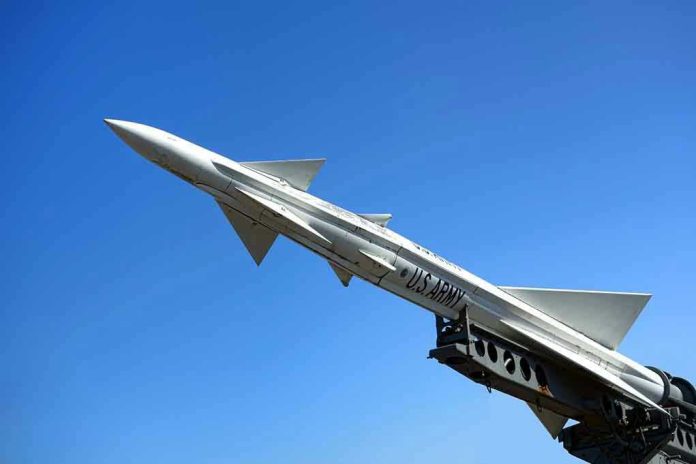
The unveiling of Lockheed Martin’s ramjet-powered anti-ship ballistic missile signals a new era in maritime warfare, promising to redefine naval strike capabilities.
Story Snapshot
- Lockheed Martin reveals a ramjet-powered anti-ship ballistic missile.
- The missile represents a significant technological advancement for U.S. naval forces.
- Designed to penetrate advanced maritime defenses with speed and precision.
- Potential to shift naval power dynamics and influence global military strategies.
Technological Leap in Naval Warfare
Lockheed Martin has officially unveiled a new anti-ship ballistic missile (ASBM) that uses ramjet propulsion, marking a pivotal development in naval strike technology. This advanced missile is engineered to engage enemy warships over long distances, combining speed, maneuverability, and sophisticated guidance systems. The introduction of this missile is expected to significantly bolster the U.S. Navy’s capabilities against potential adversaries, such as China and Russia, who have been developing their own advanced naval defenses.
The ASBM’s ramjet propulsion system allows for sustained high speeds, giving it the ability to outrun and outmaneuver existing defense systems. This capability is crucial in modern naval warfare, where the ability to penetrate increasingly sophisticated shipborne air defenses is a top priority. The missile’s advanced guidance system ensures precision targeting, which is essential for engaging moving targets like enemy warships.
Historical Context and Development
The development of this missile can be traced back to the early 2020s, a period when the U.S. Navy and defense industry recognized the need for next-generation anti-ship capabilities. This need was driven by the deployment of China’s anti-ship ballistic missiles, which posed a significant threat to U.S. carrier groups. In response, the U.S. accelerated its research into hypersonic and advanced propulsion technologies, culminating in Lockheed Martin’s latest innovation.
Lockheed Martin’s prior experience with the Long Range Anti-Ship Missile (LRASM) provided a strong foundation for this new project. The company has leveraged its existing relationships with the U.S. Navy to ensure that the new missile meets the strategic requirements of modern naval warfare, including survivability and extended standoff ranges.
Key Players and Strategic Implications
Lockheed Martin, as the lead developer, plays a crucial role in maintaining technological leadership within the defense industry. The U.S. Navy, as the primary end-user, stands to gain enhanced maritime strike capabilities, which are vital for deterring adversaries and ensuring freedom of navigation. The U.S. Department of Defense oversees the program, providing funding and strategic direction.
Lockheed Martin reveals ramjet-powered anti-ship ballistic missile, which fits in a VLS cell. The PrSM Increment 4 "uses advanced propulsion methods to reach ranges that previous variants of the [PrSM] can’t achieve, hitting ranges over 800 km away". https://t.co/FG4bGLlW9L
— Olli Suorsa (@OlliSuorsa) October 15, 2025
The introduction of this missile may prompt a technological arms race, as adversaries rush to develop countermeasures or similar capabilities. There’s also a potential for increased competition among defense contractors as they vie for contracts to develop complementary technologies. This development could have far-reaching economic, political, and strategic impacts, influencing defense spending and international relations.
Current Status and Future Prospects
As of now, Lockheed Martin’s ramjet-powered ASBM is in advanced stages of development, with ground and flight tests planned for late 2025 and 2026. The missile’s integration with various launch platforms, such as surface ships and aircraft, is under consideration. The U.S. Navy has expressed interest in rapid prototyping and deployment to ensure its fleet remains technologically superior.
In the short term, the missile is expected to boost the U.S.’s deterrence posture, signaling technological progress to both allies and adversaries. In the long term, it may shift the balance of naval power, prompting discussions around arms control and new defense strategies. As the program progresses, ongoing evaluations will determine its full operational potential and strategic impact.
Sources:
Lockheed Martin: Long Range Anti-Ship Missile (LRASM) Product Page






